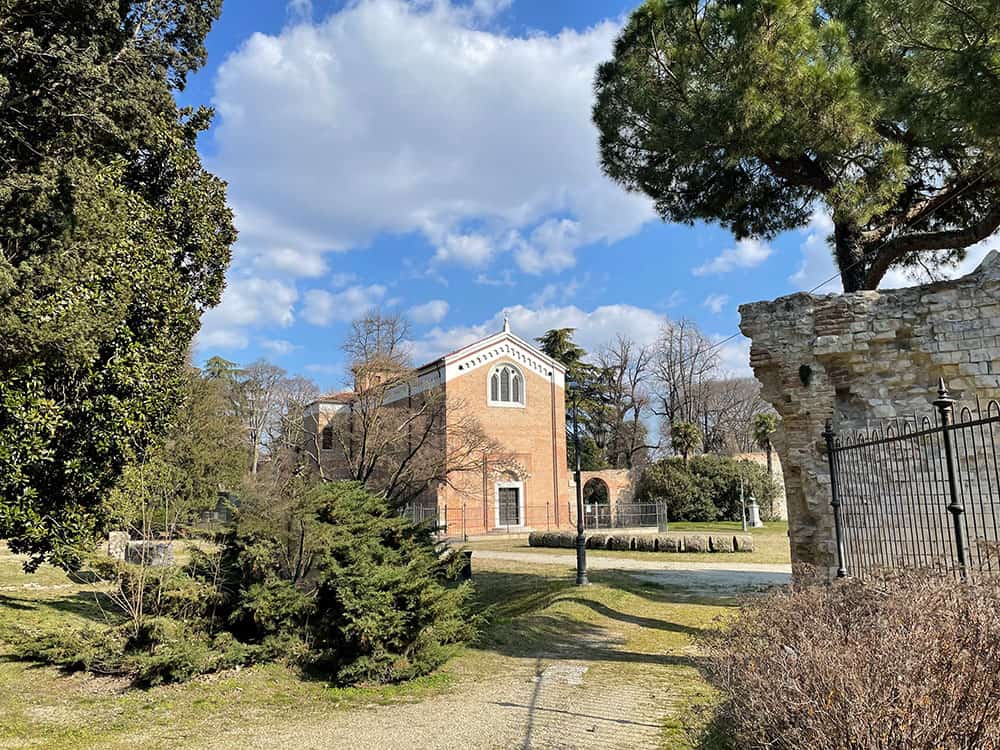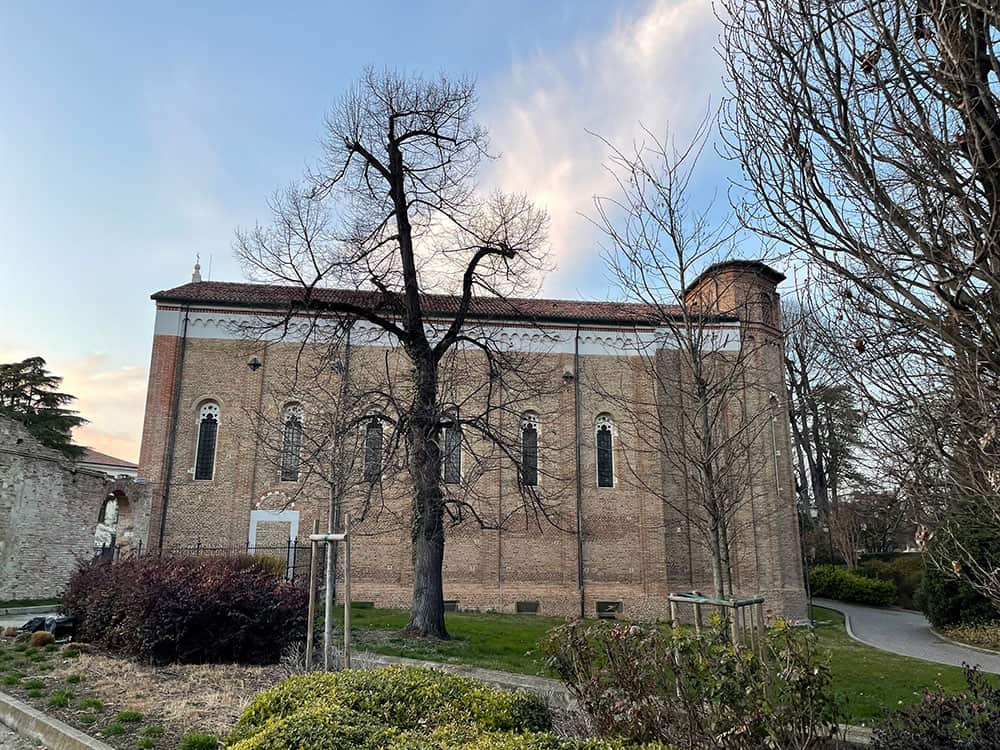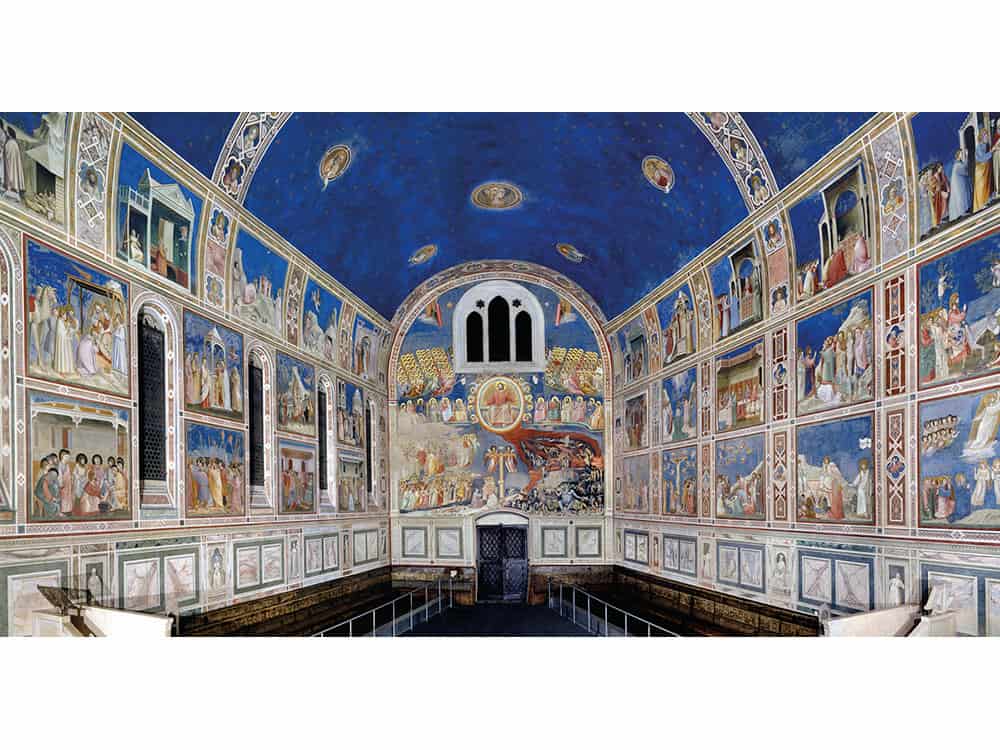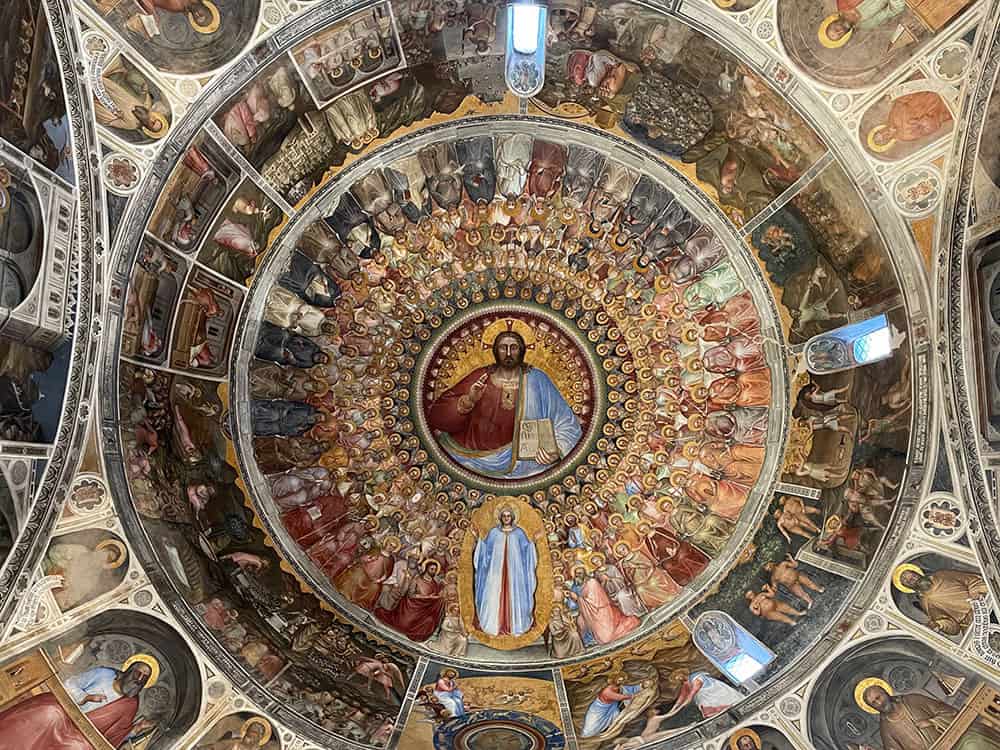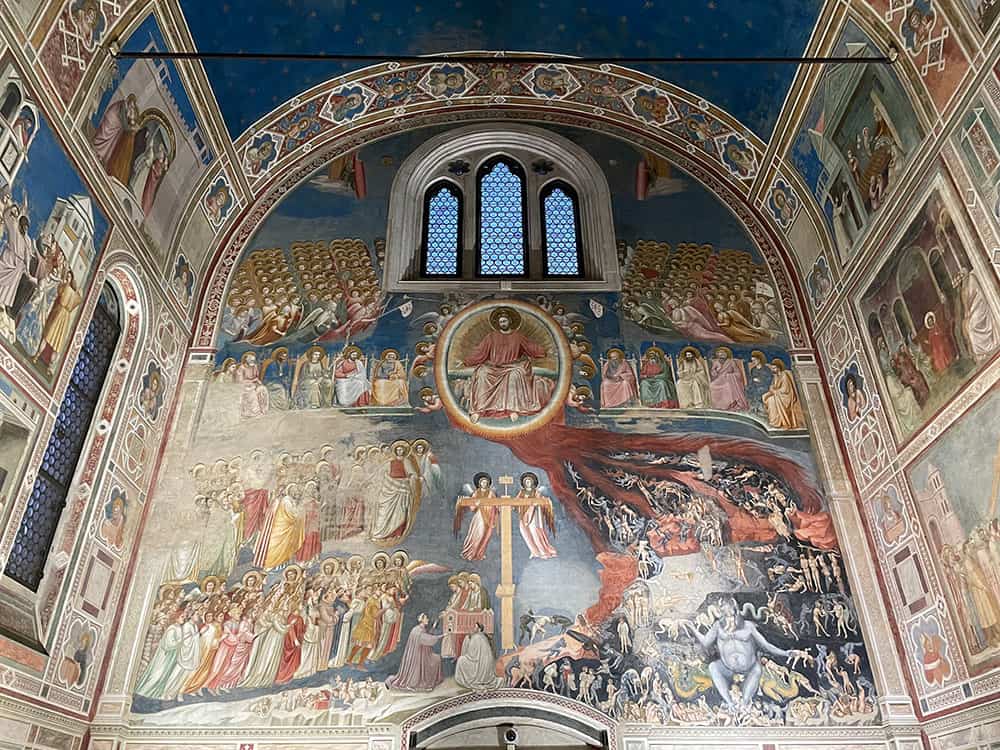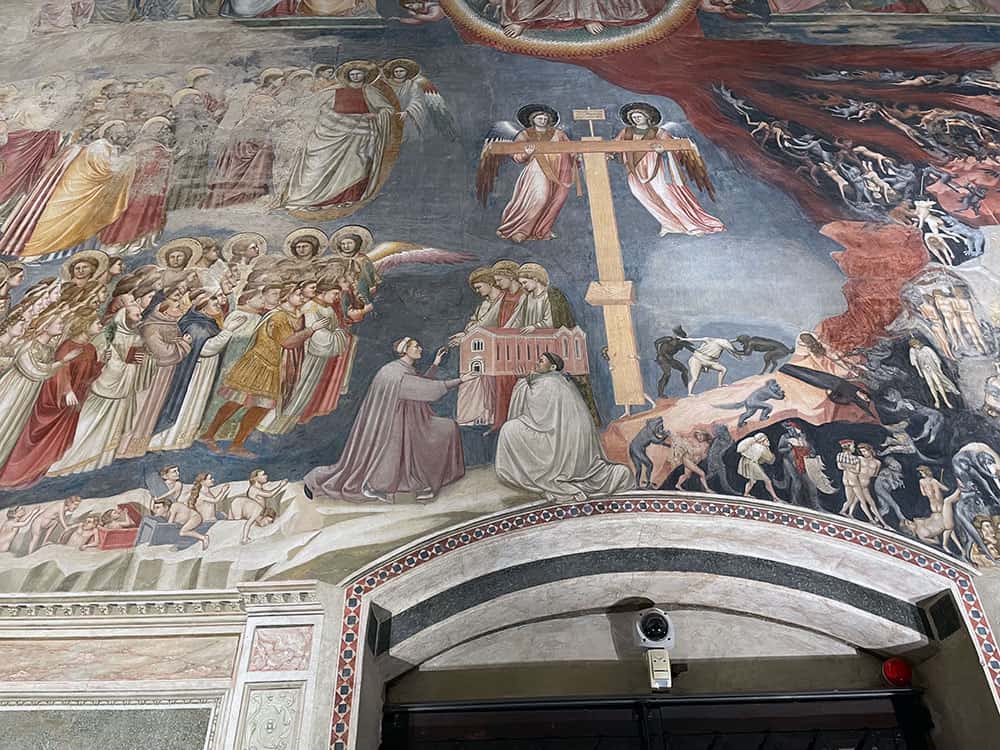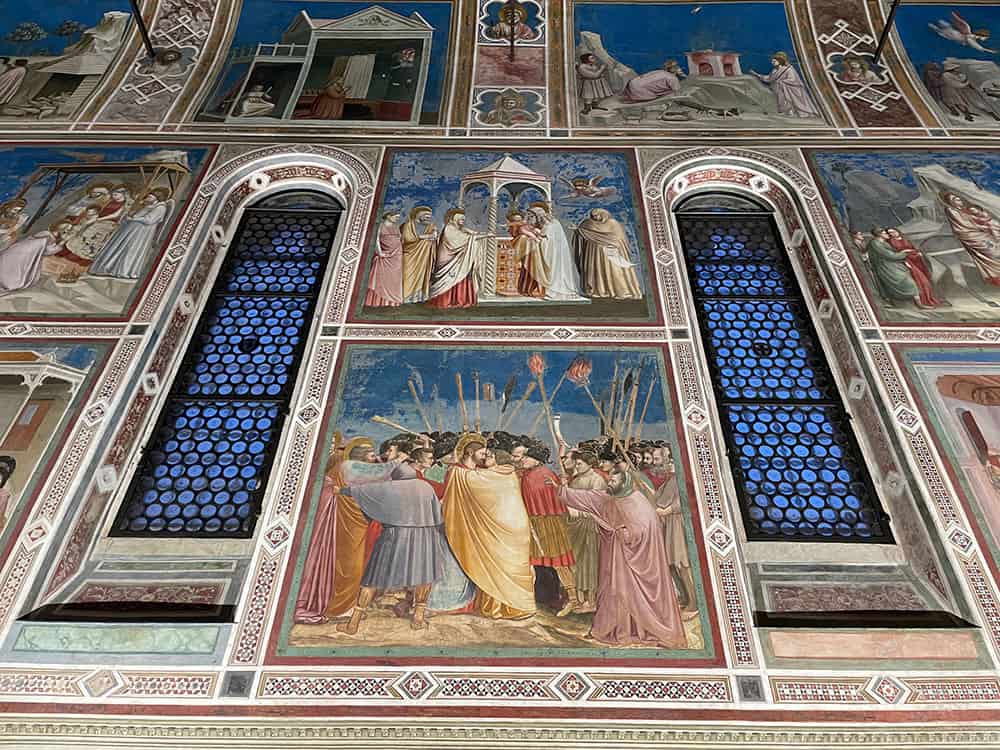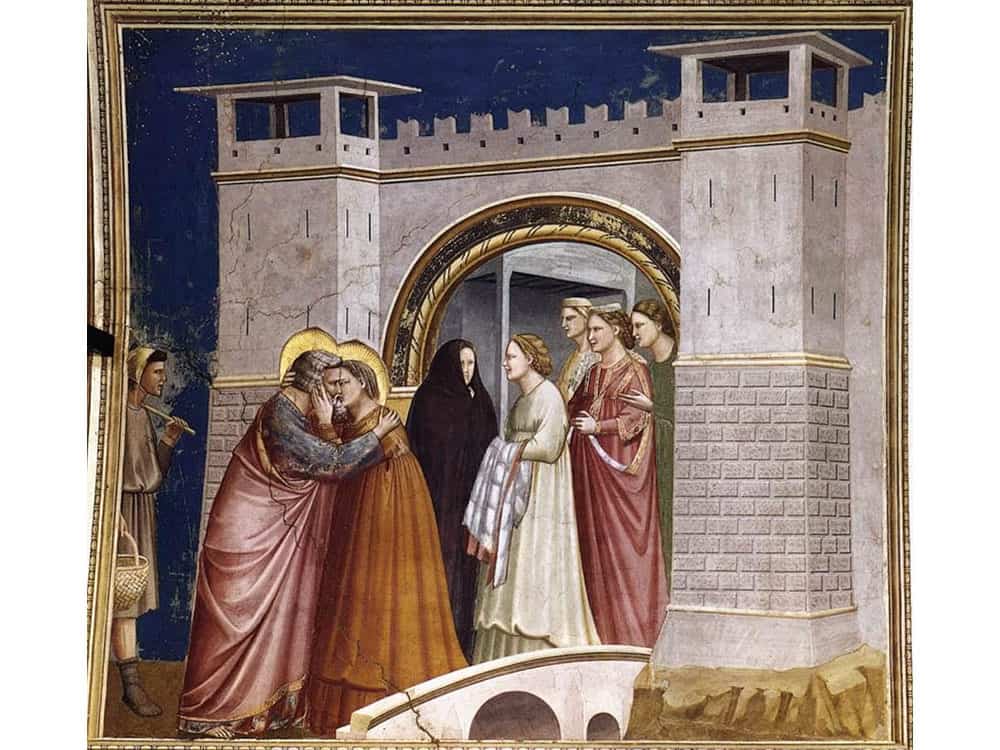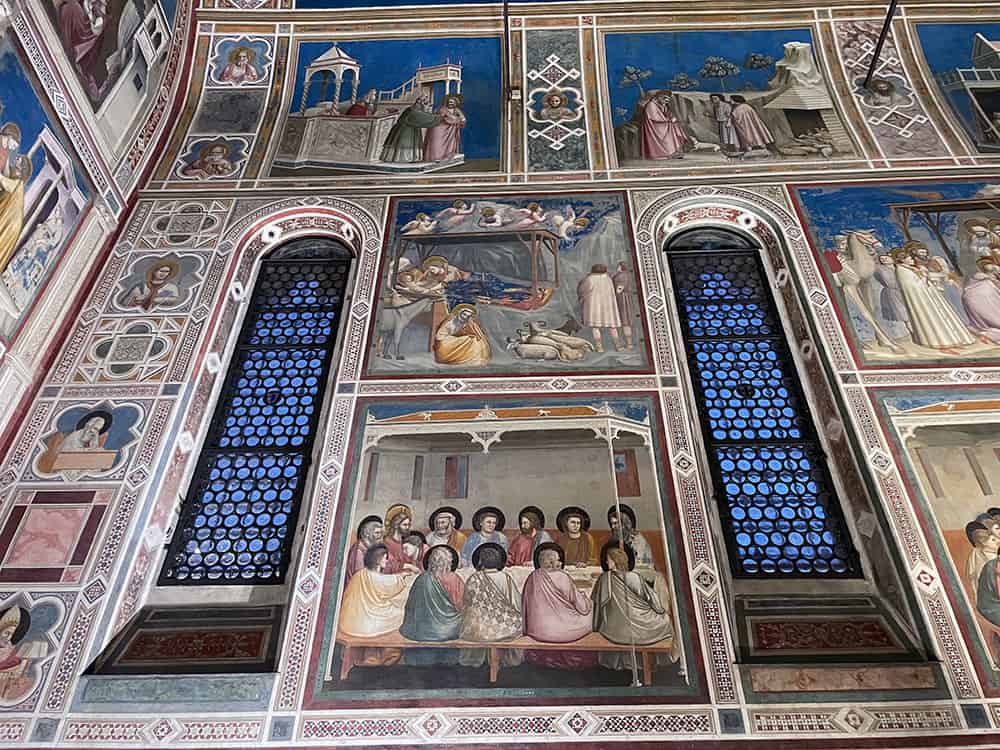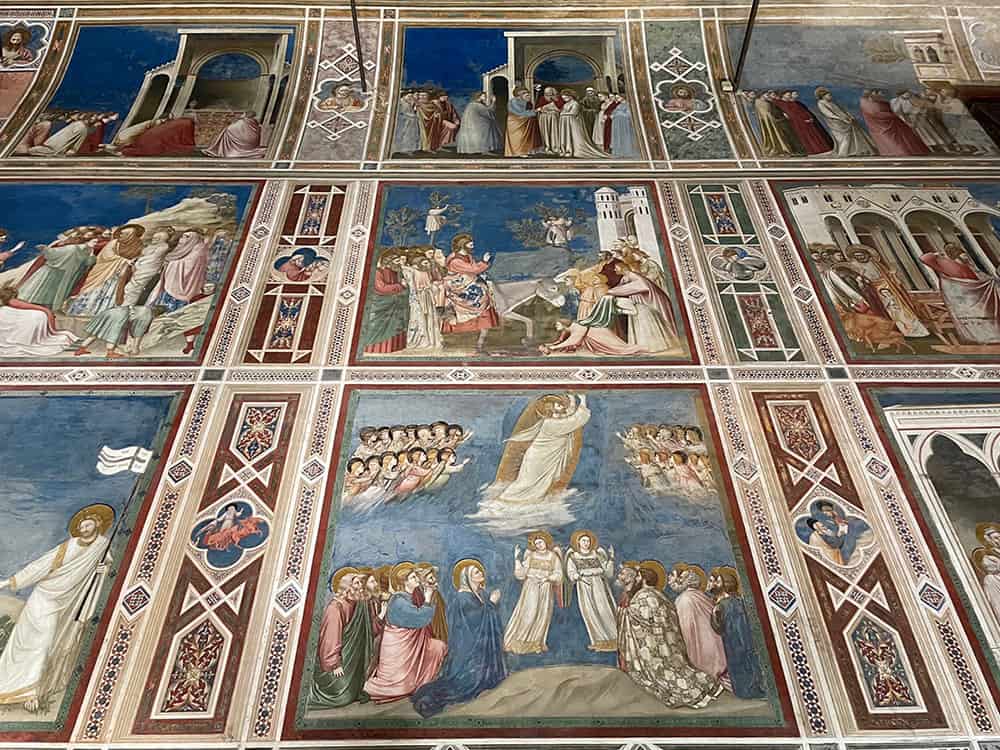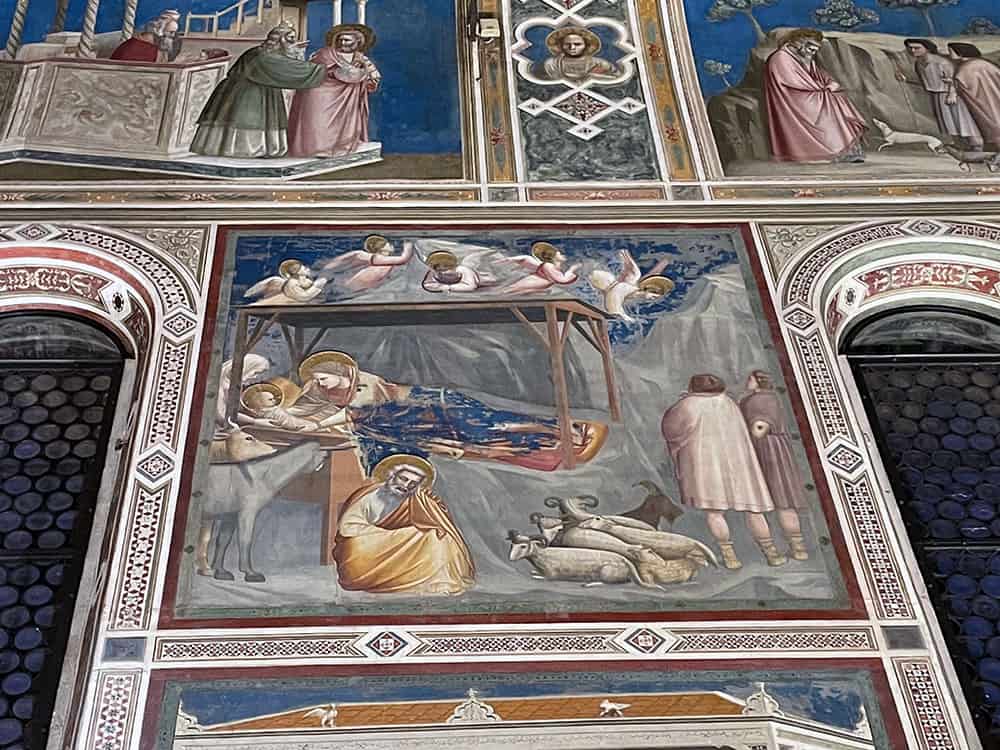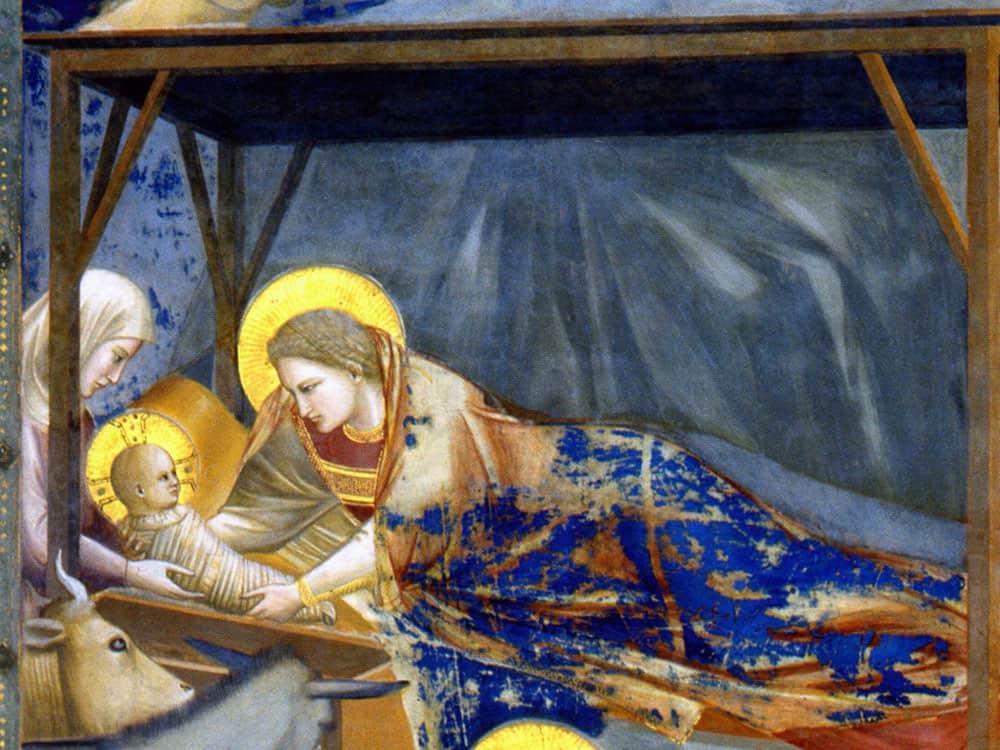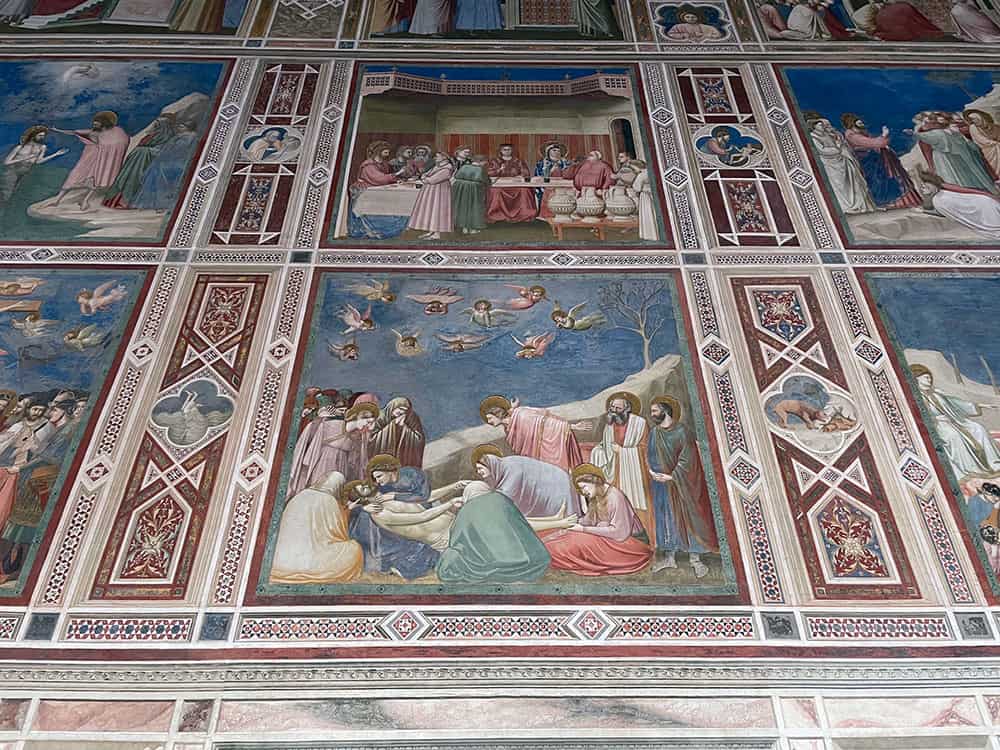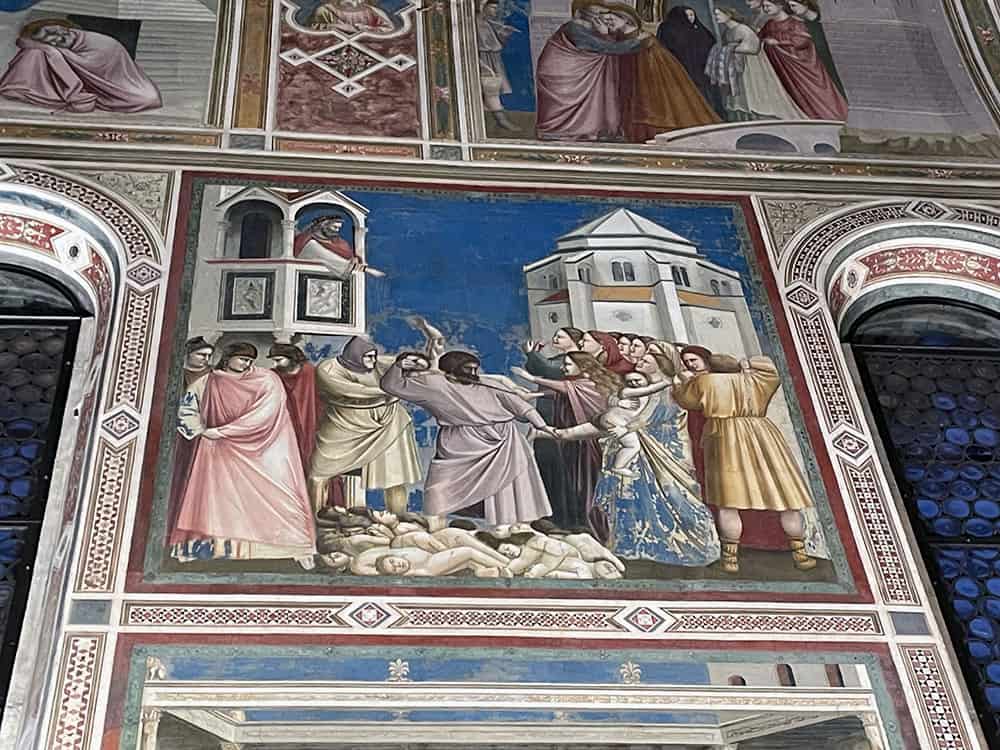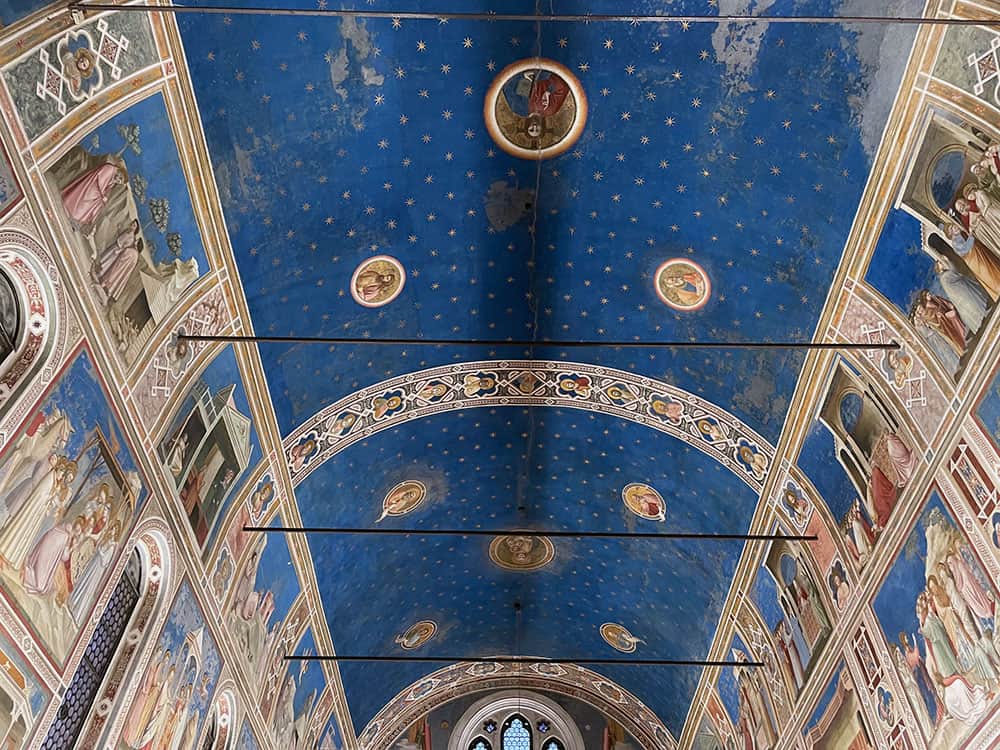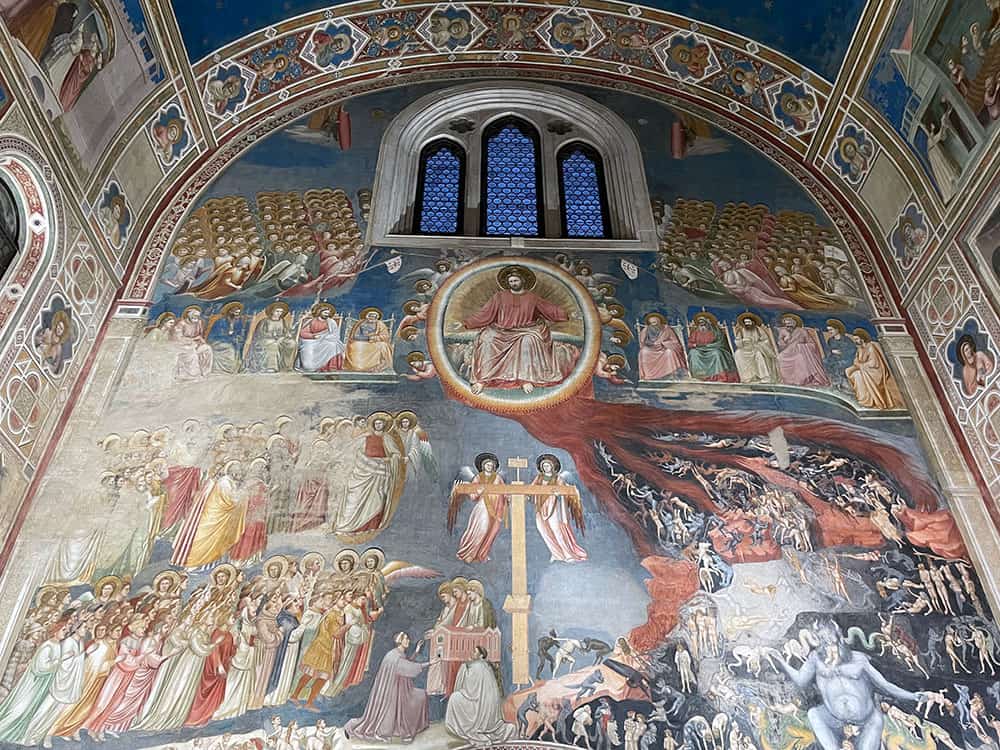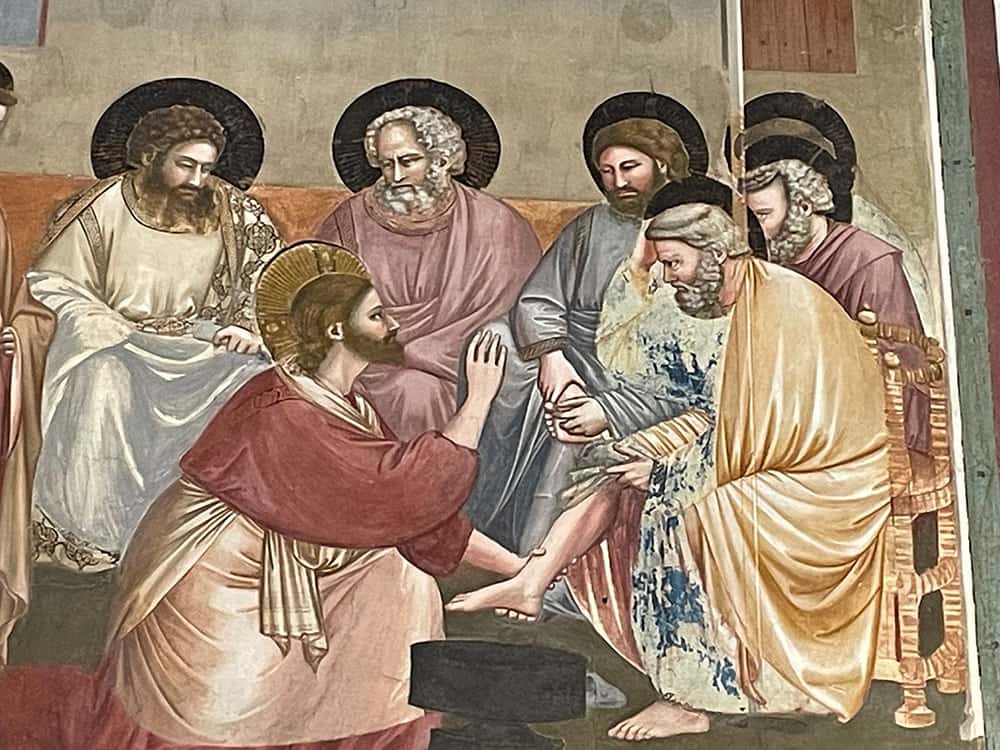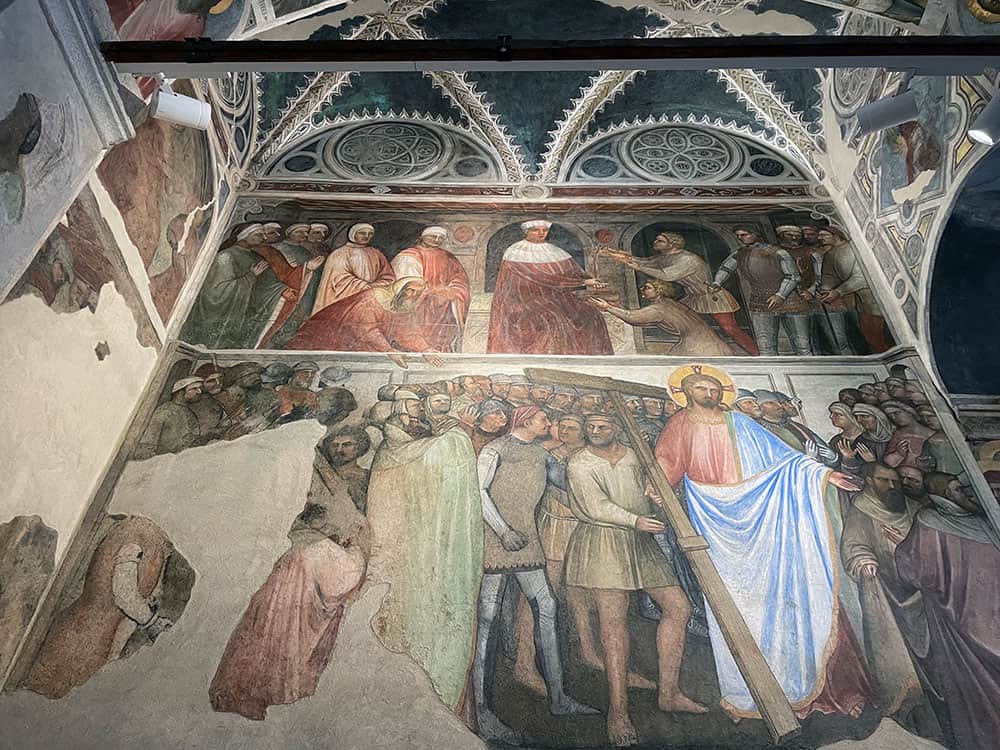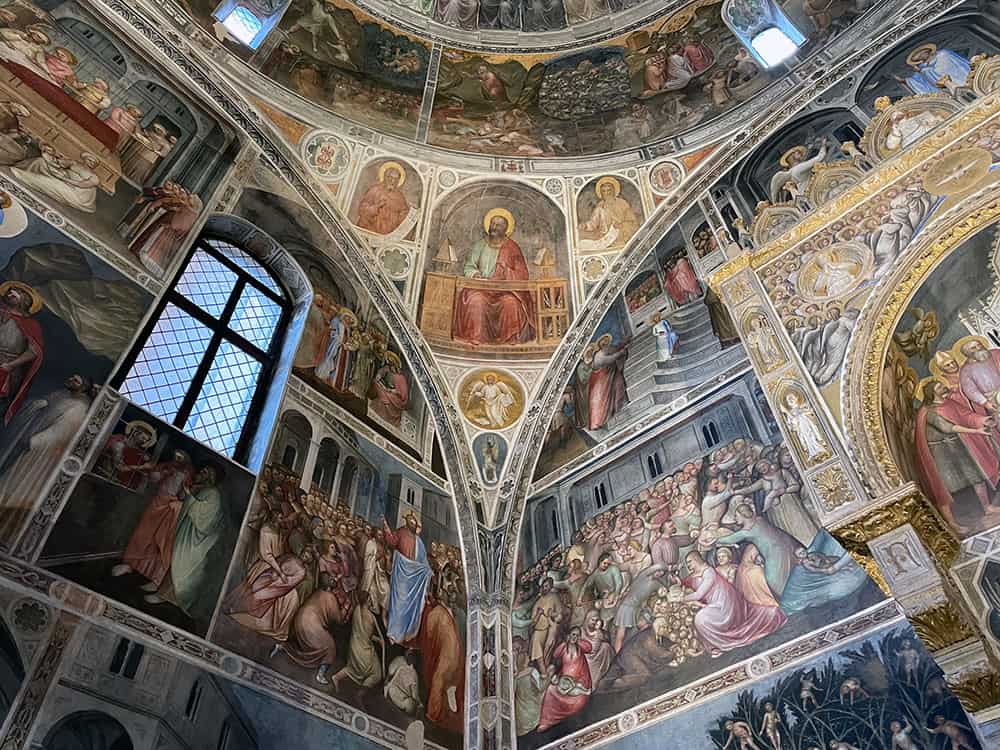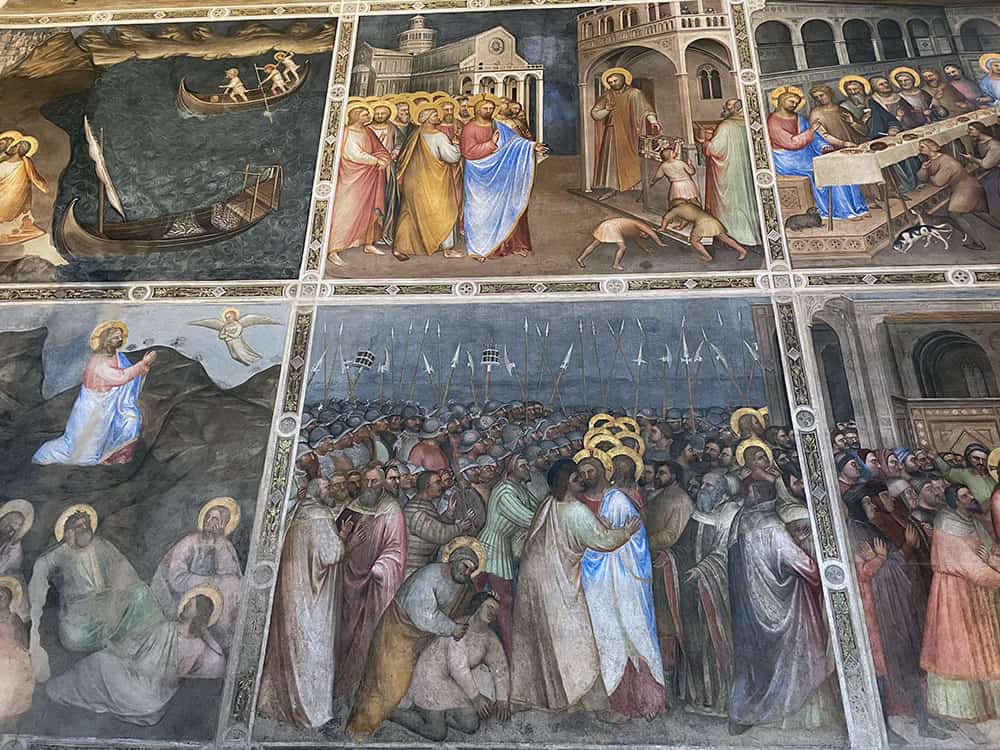Giotto di Bondone (Florence ? around 1267 – Florence, 1337) is one of the most famous painters in the history of art, surrounded by an almost mythical aura.
When he was very young, like many other painters in the history of art, he was entrusted with his apprenticeship in the workshop of an artist that in his case was believed to be Cimabue. It’s legendary the episode where Giotto once painted a fly on a Cimabue’s painting: the insect looked so realistic that Cimabue would have tried to swat it away. Another famous legend concerning Giotto is that he was able to draw a perfect circle freehand.
Apart from his little-known biography, Giotto undoubtedly belongs to the Olympus of Italian painters of all time both thanks to his mastery and to the revolutionary nature of his art that led Italian painting from the Middle Ages to the Renaissance.
I mention this because, among others, there are two characteristics of Giotto’s painting that somehow anticipate by decades a way of depicting that will be followed in subsequent pictorial experiences: the use of perspective and the expressiveness of the subjects represented. With Giotto the hieratic and Byzantine style of the Middle Ages was definitively abandoned in favor of great attention to reality, both human, therefore emotional, and environmental, increasingly showing an illusionistic definition of architectural spaces.
As in the past, in his paintings, Giotto told stories related to religion and sacred texts but his characters are men and women set in landscapes and environments recognizable as authentic and their gestures display pain, tenderness, terror, and patience; for the first time in centuries, Giotto’s realism spoke an empathic language, capable of communicating to the spectators through a new, vibrant truthfulness.
We drove to Padua to visit the Scrovegni Chapel, which hosts a famous cycle of Giotto’s frescoes from the early 14th century, considered one of the Western art masterpieces.
Enrico Scrovegni, a very wealthy Paduan banker, bought in 1300 a piece of land with the intention of building, between 1302 and 1303, a small chapel with a single nave (29.88 m long, 8 m wide, 41 m, 12.65 m high), originally connected to the Scrovegni Palace, later demolished in 1827.
The chapel was dedicated to his father Rinaldo, known for having been a usurer, a profession that had given him a very bad reputation, considering that Dante places him in the circle of Hell (the Church admonished his followers who carried out this activity considered a real sin, so much so that only Jews used to openly practice it).
The chapel construction, therefore, had the purpose for Enrico to clean up his family image and to picture himself as a noble, and very devoted benefactor. Giotto, forty years old and at the height of his fame, was commissioned to paint the interior of the chapel, and, between 1303 and 1305, the cycle was completed: the purpose of the construction of this chapel is shown very clearly in the representation of the client, Enrico, offering the Virgin Mary a model of the building as a “free pass” to Heaven.
The frescoes in the Scrovegni Chapel have come to us better preserved than those in the Basilica of Assisi, but in 2001 the entire cycle was subject to an extraordinary restoration work which further intensified the brilliant colors of the paintings that we can enjoy today.
I don’t want to bore you with a detailed description of all the paintings since you will find it in every guide but I would like to point out some images that underline the characteristics I have just described.
Among the stories of Anna and Joachim, Virgin Mary’s parents, we will find the famous image of the kiss. The two elderly spouses didn’t have any children and this, at the time, was considered a dishonor. As a consequence Joachim was expelled from the Temple of Jerusalem and, mortified, he took refuge among the shepherds.
When the Archangel Gabriel announced to Anna that she was going to become a mother, Joachim, warned by a dream from an angel, could finally go back home. In the painting, the meeting with his wife takes place at the Golden Gate of Jerusalem, and the two, with gray hair and wrinkles around their eyes, embrace and tenderly kiss on the mouth. It’s almost absurd to imagine such a domestic, private and tender approach in a medieval representation. Joachim is followed by a shepherd, who is cut halfway out of the scene, suggesting that the space extends beyond the frame of the square: a solution often used by Giotto, for the times, very modern and very effective.
In the Nativity scene where the Madonna is seen welcoming Jesus in swaddling clothes into her bed, we see her lying on her side in a very natural and affectionate pose, reaching out toward her child like any other mother.
One of the strongest and most passionate paintings of this cycle is for sure the Lamentation of the Dead Christ where everything moves around the figure of Jesus’ corpse taken down from the cross, the Madonna, who holds his bust on her knees, Maria di Cleofa (left) with his arms outstretched, Maria Salomè (in the center) holding his hands, the Magdalene holding his feet, the young weeping St. John who dominates the group and other men and women. This small crowd of mourners, each with his gesture and expression, creates an orchestrated scene, emotionally involving, of an extremely touching lyricism.
Even the angels whirl in the sky like crazy birds, sobbing, covering with their hands their faces, pulling their hair, showing genuine and absolute pain in total contrast with the somewhat aseptic traditional image.
Another scene that is striking for its naturalness is that of the “washing of the feet” in which we perceive the gesture of the apostle who, evidently aware and embarrassed of his dirty feet, right before his turn, tries to clean himself up, rubbing his forefinger between his toes.
The way Giotto represented architecture should be also noted: his buildings and rooms are no longer flat, theatrical backdrops but they build concrete environments in which humans live surrounded by their common objects like trunks, benches, shelves, beds, curtains, striped blankets, etc.
In this believable fiction, figures take on a new, never seen truthfulness.
Mankind will soon become the center of interest: Renaissance and humanism derive from this imagery, which naturally exhibited its strengths and romantic weaknesses like no one dared express before Giotto!
Here is our video of our visit! Enjoy!
Betti
[socialWarfare]

